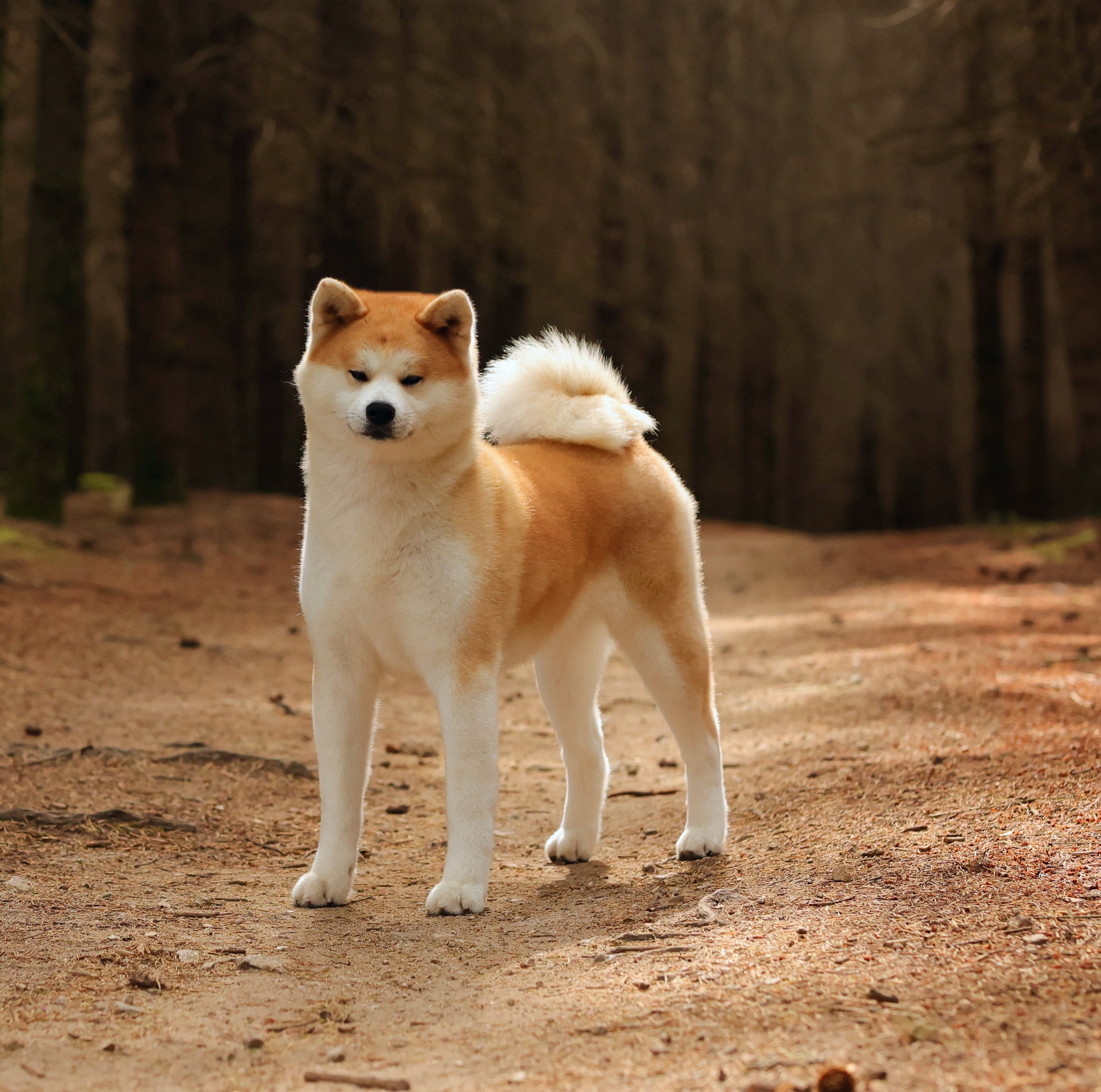Breeds
Akita (Japanese)

GROUP 6 - UTILITY
Brief History
Originally Japanese dogs were small to medium in size and no large breeds existed. Since 1603 in the Akita region, Akita Matagis (medium-sized bear-hunting dogs) were used as fighting dogs. From 1868 Akita Matagis were crossed with Tosas and Mastiffs. Consequently, the size of this breed increased but characteristics associated with spitz type were lost. In 1908 dog fighting was prohibited, but this breed was nevertheless preserved and improved as a large Japanese breed. When World War II ended, Akitas had been drastically reduced in number and existed as three distinct types; Matagi Akitas, fighting Akitas, and shepherd Akitas. This created a very confusing situation in the breed.
Average Life Span
When considering a dog, please realise that you are taking it on for its lifetime.
The average life span is 10 to 15 years.
Temperament
The Akita Japanese is composed, faithful, docile and receptive.
General Breed Description
The Akita Japanese is a large breed, sturdily built, with plenty of substance, erect ears, small eyes and a curled tail. He is a healthy, alert, active breed, very well suited to both indoors and outdoors. They are very clean, learn quickly and are great to live with they will adapt to almost any lifestyle. The Akita Japanese colours are red fawn, sesame (red fawn hairs with black tips), brindle and white.
Coat and Care Requirements
The Akita Japanese does not have a doggy odour and is exceptionally clean. Coat maintenance is not exceptionally high, but we do recommend he has a bath and is dried with a good dog dryer ever few months. The Akita Japanese will drop their entire coat once or twice a year, during this time grooming is essential.
Size
Height: Males 64 to 70cms, Females 58 to 64cms.
Health
All breeds have individual health issues. When speaking to breeders it is recommended you enquire about the breed’s health and what health testing the breeder does. The Akita Japanese is generally a healthy breed, however health conditions do occur occasionally.
Suitability
They are a great family dog. They must have a yard with secured fencing. They are very happy both indoors and outdoors.
In Conclusion
Now you know a little more about this breed. If you have decided this is the dog for you and wish to investigate further, please contact the Breed Club or Dogs Victoria. They will be able to give you information about available puppies and also suggest dog events where you can see the breed and speak to breeders. In this way you will gain a better perspective of the breed and its needs. With any breed of dog, it is important to research and determine suitability for your lifestyle before committing to a puppy which will be a part of your family for many years to come.
Whilst many breeds are recommended for families, it is imperative that when children are with dogs they are supervised at all times. Basic obedience training is a vital part of dog ownership.
Dogs Victoria is about the responsible ownership of all dogs and in particular the preservation of pure breeds.
Link to Dogs Australia Breed Standard: https://dogsaustralia.org.au/breed/detail/80
Breeders
Sorry, there are currently no breeders advertising for this breed. If you are a registered Dogs Victoria breeder and wish to advertise here please create an advertisement here.



